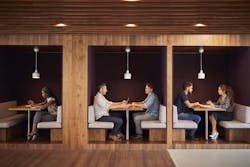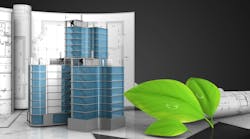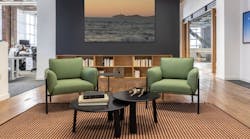How to Design Workplaces That Bridge Multi-Generational Gaps
Key Highlights
- Recognize the unique traits and preferences of traditionalists, baby boomers, Gen X, millennials, and Gen Z to inform effective workspace design.
- Engage employees through surveys and conversations to better understand their needs and tailor the workspace accordingly.
- Incorporate sustainable, circular, and biophilic design elements to promote well-being, environmental responsibility, and resilience.
- Offer versatile options and adaptable spaces that provide employees with control, fostering inclusivity and satisfaction across all generations.
The 21st-century workforce spans five generations—traditionalists, baby boomers, Gen X, millennials, and Gen Z. Each has distinct needs, work styles, and expectations. Businesses offer competitive salaries and perks to stay relevant in their industry. What else can they do to ensure that all five generations feel their workspace is flexible, inclusive, and sustainable?
Designing workplaces that cater to all age cohorts simultaneously can be challenging, but it’s doable. Let’s explore how interior designers can help business owners bridge generational gaps.
Understanding the Five Generations in the Workplace
With the caveat that general traits may not apply to every individual, they still offer a starting point for determining what values can connect to design features that appeal to each age group.
Traditionalists are known as dependable and loyal—they’ve advanced through many of the world’s changes. Baby boomers are optimistic and tend to prioritize work. They believe that rewards come from sacrifice. Generation X is independent and flexible—they’re motivated by a work-life balance and use efficient communication tools.
Millennials are competitive and achievement-oriented. They prefer texts and emails and strive for unique work experiences. Generation Z is progressive—Gen Z students are the most digitally engaged, using social media and texting to communicate.
Traditionalists and baby boomers value privacy and tactile materials, while Gen X enjoys having a collaborative and focused space. Millennials and Gen Z are the biggest supporters of sustainability. While all five generations seem different, they all tend to value purpose, belonging, balance, and fair compensation in the workplace.
TIP
One of the best ways to grasp what each generation requires is to listen to their needs and wants. Initiate conversation and surveys about what’s working and what isn’t in the office space. Evaluating and understanding a team’s personality and typical work styles gives designers and their clients a better understanding of how to create a multi-generational workplace.
Design Strategies for Inclusivity and Flexibility
When designing the workplace, consider the employees’ backgrounds and diversity, and conduct ample research. It’s essential to cater to everyone’s needs because employees spend about 90,000 hours at work. On average, full-time workers spend about 8.5 hours in the office. While you can’t give everyone their dream office, you can offer universal designs.
A modern, multi-generational office should include plenty of options to give employees choice and control over the space:
Circular Design and Healthier Materials for Sustainability
A contemporary workplace should also be designed to balance durability and more environmentally friendly materials that support human well-being while minimizing waste and maintenance. About three-quarters of Gen Z prioritize sustainable products over brand names.
Circular design leverages eco-friendly materials, refurbishment, and recovery or recycling practices to keep products in good condition for a long time and minimize waste. Circular design can be achieved in multiple ways:
Biophilic Design for Resilience
The integration of natural or nature-inspired elements has been shown to reduce stress and improve productivity. Help occupants feel more connected to the natural world even within a confined space.
Design A Path to Success
The five generations may vary in work ethic, communication, motivation, and goals, but they all want a workspace that’s inclusive and supports their overall well-being. With adaptability, circularity, and biophilic elements at the top of the priority list, you can realize a workplace design that meets the client’s budget, serves employees well, and minimizes its environmental impact.
Additional References
- General Services Administration, Section 508 website, “Universal Design and Accessibility” (latest update August 2025).
- Heal The Planet website, “100 Ways to Heal the Planet—#27 Upcycling.”
- Rock Commercial Real Estate blog post, “How Much Office Space Do I Need?” (June 12, 2024).
- S. de Vries, T. Hermans, and F. Langers, “Effects of indoor plants on office workers: a field study in multiple Dutch organizations,” Frontiers in Psychology (June 28, 2023; accessed from National Library of Medicine PubMed Central).
Check Out These Sustainability Resources
About the Author

Evelyn Long
Freelance writer
Evelyn Long is an experienced interior design writer that has been featured on the National Association of Realtors and DecorMatters sites. She specializes in improving workplaces for a diverse and modern workforce. She is also the editor-in-chief of Renovated Magazine, where she writes interior design advice for homeowners.






